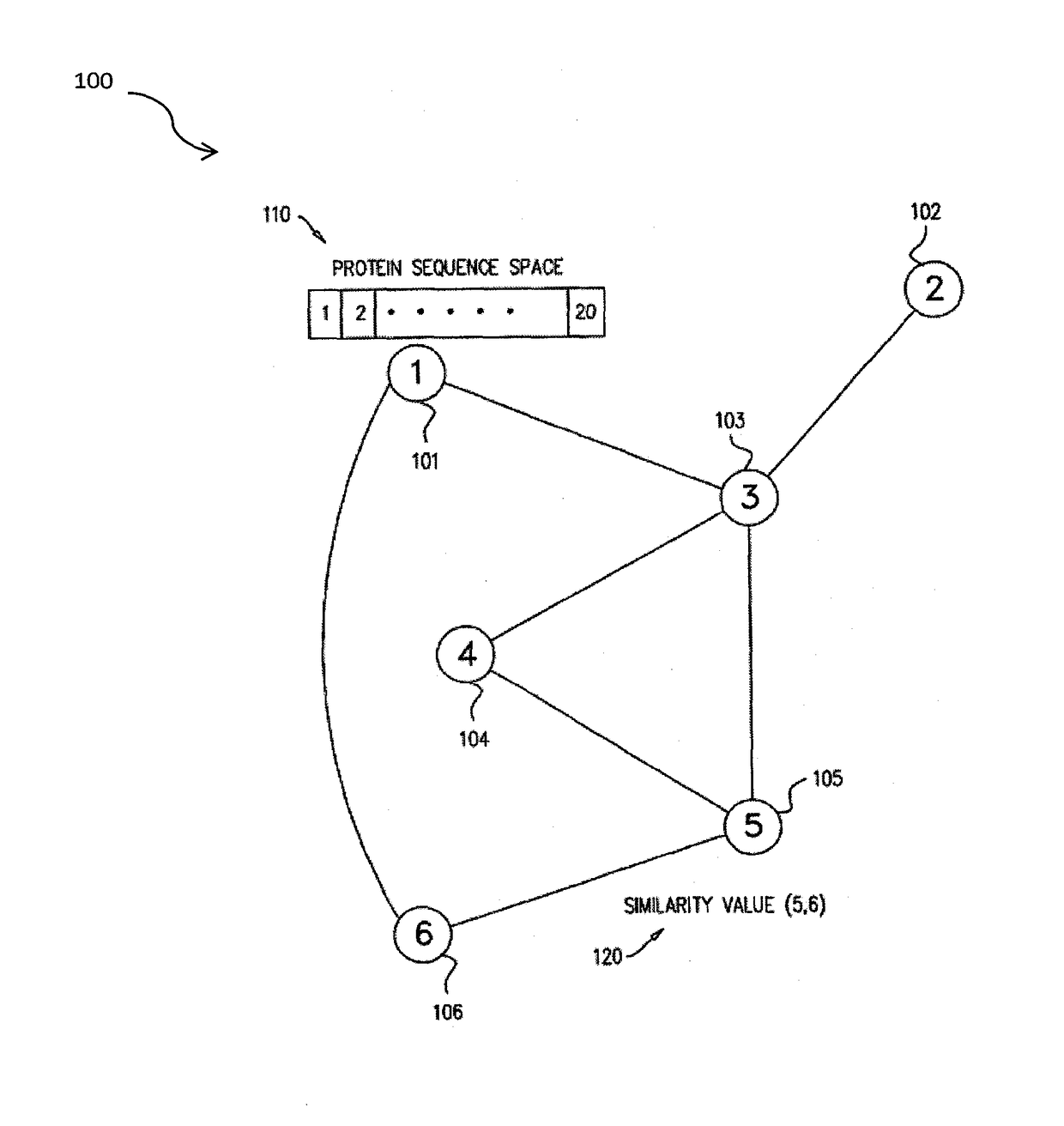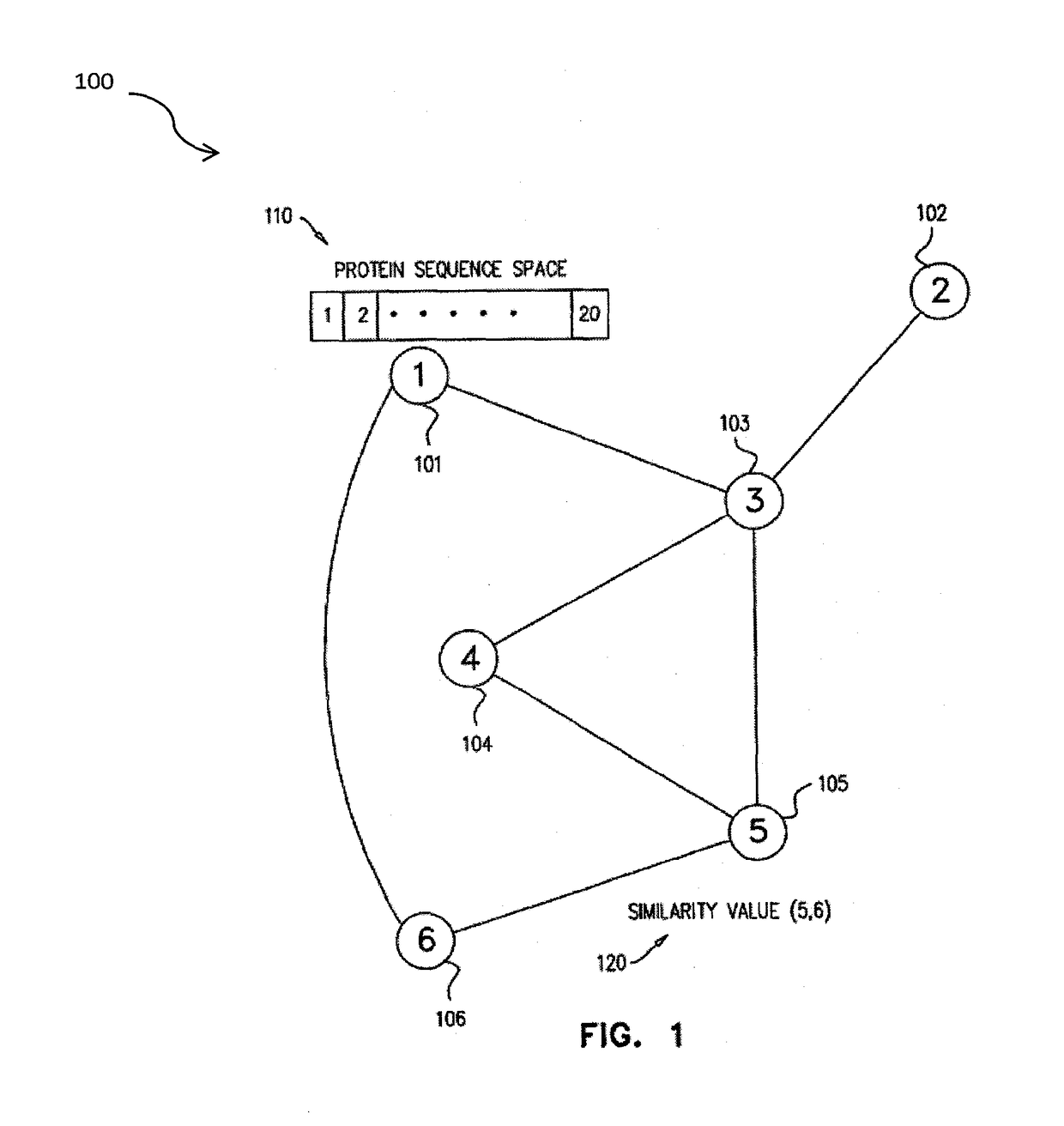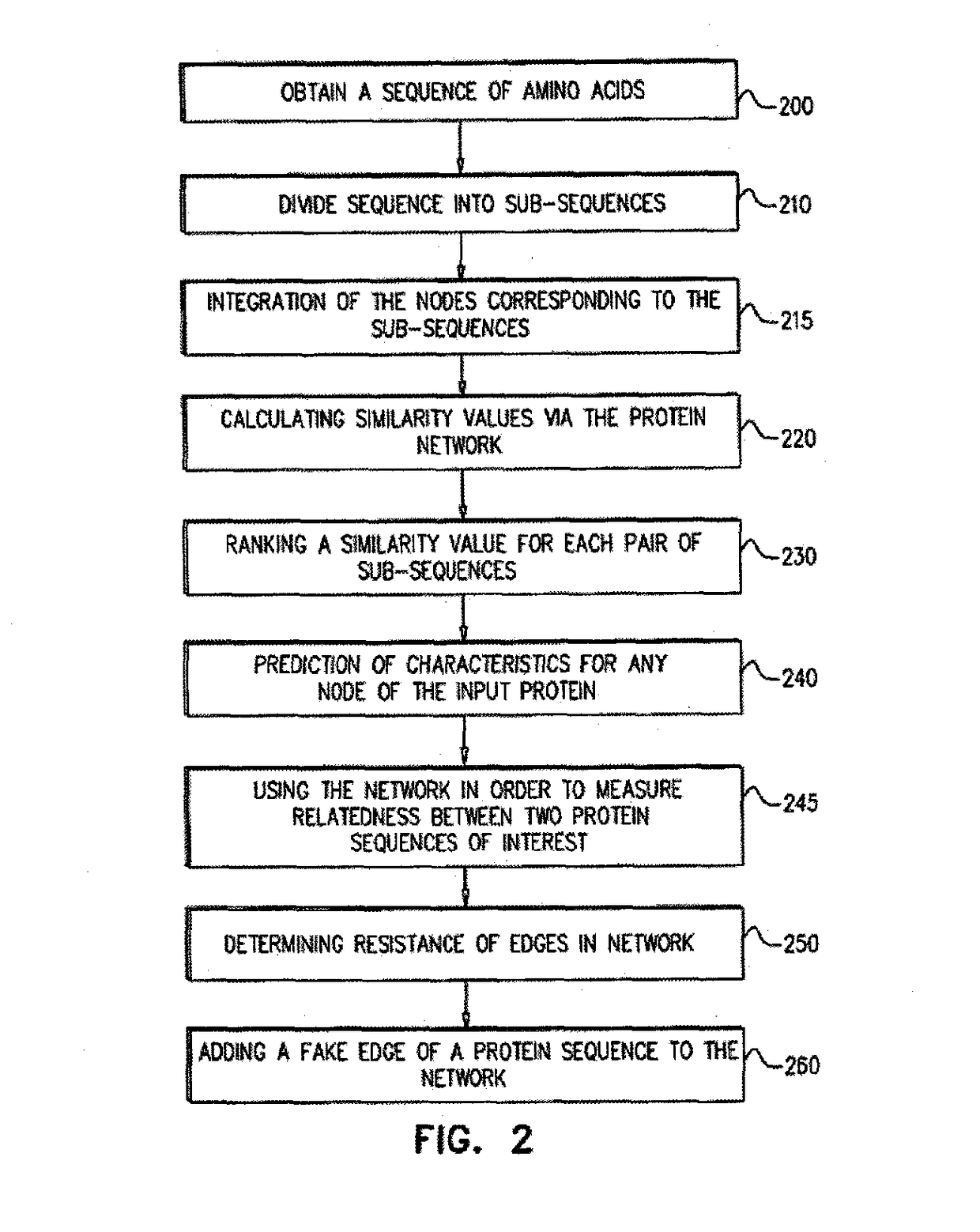System and method for generating detection of hidden relatedness between proteins via a protein connectivity network
a protein connectivity and protein technology, applied in the field of protein connectivity network detection, can solve the problems of inability to solve problems, limited approach, troublesome tasks, etc., and achieve the effect of improving the prediction power of said protein network
- Summary
- Abstract
- Description
- Claims
- Application Information
AI Technical Summary
Benefits of technology
Problems solved by technology
Method used
Image
Examples
example 1
[0359]Method For Generating A Weighted Relatedness Protein Network
[0360]Reference is now made to a non limiting example of some of the embodiments of the method of the present invention.
[0361]In the previous un-weighted methods, see [Frenkel Z. M., Snir S., etc. JTB, 260 (2009): 438-444] which is incorporated herein in it's entirety, all edges in a protein network are equal. The resistance between two remote nodes reflected only the amount of independent paths and their lengths, without taking into account the possible effects of properties of corresponding protein fragments. Evidently, it is shown by the present example that the probability of two neighboring nodes to be similar depends on sequence similarity of the correspondent sequences. One aim of the present invention is to build a weighting function, in which on the basis of input of two protein sequences would provide a probability of two protein fragments corresponding to nodes in the protein network to be similar.
[0362]Ste...
example 2
[0420]The Contribution of Using Fake Edges
[0421]As previously described, the improved Protein Network Model was applied to the PCN connected components described in [Frenkel Z. M., Snir S., etc. JTB, 260 (2009): 438-444] which is incorporated herein in it's entirety. The protein network contains thousands of nodes (sequence fragments) of known structure. About 15,000 connected components of different sizes (100-5000 nodes) were considered. To measure an improvement of the model by use of fake edges the following procedure was run:[0422]1. For each connected component was selected a pair of not-neighboring nodes with known 3D structure with RMSD between them less than 1.5A (if present). In the current example there are about 9,500 components containing such pairs (from the about 15,000).[0423]2. New edges were added to the networks between the correspondent nodes with weighted resistance equal to the RMSD predefined value[0424]3. For the identical sets of pair of not-neighboring node...
PUM
 Login to View More
Login to View More Abstract
Description
Claims
Application Information
 Login to View More
Login to View More - R&D
- Intellectual Property
- Life Sciences
- Materials
- Tech Scout
- Unparalleled Data Quality
- Higher Quality Content
- 60% Fewer Hallucinations
Browse by: Latest US Patents, China's latest patents, Technical Efficacy Thesaurus, Application Domain, Technology Topic, Popular Technical Reports.
© 2025 PatSnap. All rights reserved.Legal|Privacy policy|Modern Slavery Act Transparency Statement|Sitemap|About US| Contact US: help@patsnap.com



